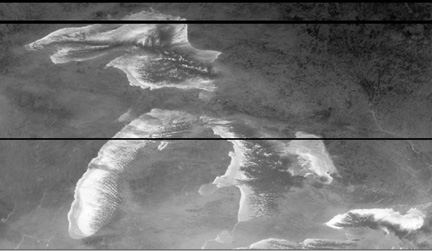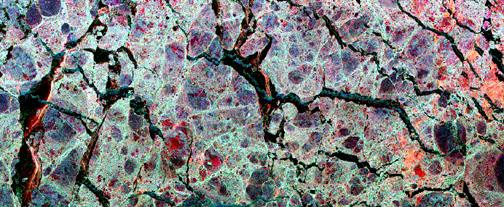
Our final look at satellite
use in oceanographic monitoring concerns sea ice, which normally occurs year
round in the polar regions but to varying extents. Polar orbiting satellites
repeatedly pass near the poles on a daily cycle. Visible and radar imagery is
effective in observing sea ice on a continual basis. Radar at bands that penetrate
clouds (e.g., L-band) is now operational (Canada's Radarsat, for example) to
monitor shipping lanes subject to ice hazards. Below is a SIR-C multiband color
composite that shows ice in the Weddell Sea, off Antarctica, south of the Atlantic
Ocean. Open water, called polynas, shows as darker tones.

14-36: Why does this ice show a blocky or patchwork pattern? ANSWER
Sea ice may retreat during the summer but reform in new patterns as winter ensues, as shown in this Landsat image off the Greenland coast:
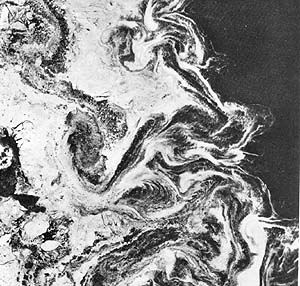
As the ice forms seasonally,
the growing pack can take on swirl patterns caused by eddy-current circulation,
as seen in this SIR-C image:
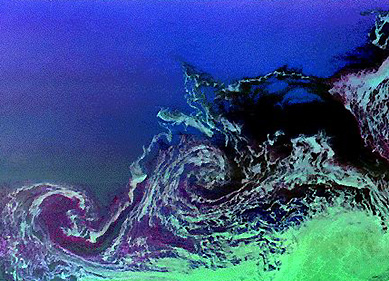
14-37: Which way are the ice eddies swirling? ANSWER
We see the nature of ice
packs in the Arctic, over a large area, in this HCMM-Visible image of the Chukchi
Sea in the Bering Strait between Alaska and Siberia. The ice in this scene has
a network of cracks, called leads, which open during summer breakup and refreeze
when conditions demand.

Sea ice distribution over a large region is effectively being monitored now by the MODIS sensor on Terra (see Section 16). Here is a view of ice passing through, and blocking, the Bering Strait between Siberia and western Alaska.
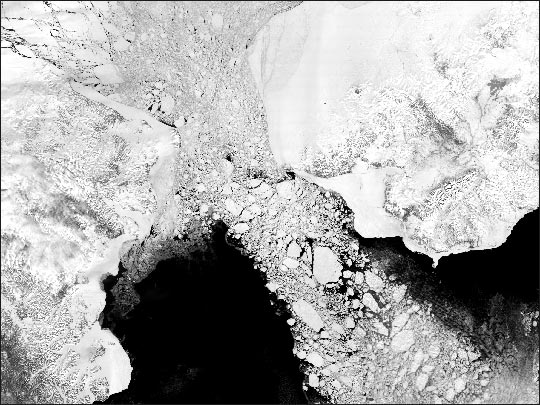
The polar regions of the Northern Hemisphere are covered by sea ice, ice caps or sheets (e.g., Greenland) and snow, as depicted by this composite image constructed from Radarsat SAR images:
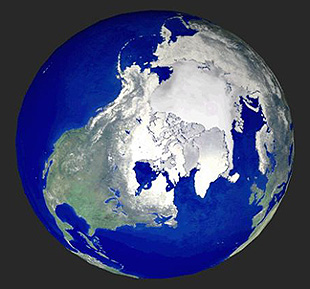
Below is another view of
the north polar regions, showing the prevailing ice cover, made by NSCAT (the
NASA Scatterometer).
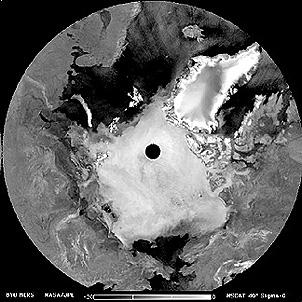
Next, we show the growth and shrinkage of the ice fields surrounding Antarctica as sensed by ESMR that appeared earlier in this section. Below these images are SMRR images that show changes in the ice cover for four years, during the 1978-86 period, in the top diagram.
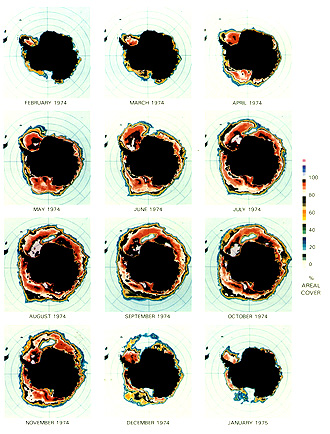
14-38: In the lower of these two diagrams above, why is ice minimal in December? In the upper diagram, what is ice-covered besides the Arctic Ocean? ANSWER
The ice shelf surrounding the Antarctic continent extends sometimes 100s of kilometers from shore. Periodically parts of its edge will break loose and float free in the southern ocean. In 1995 a large (greater than Rhode Island in size) raft of ice, assigned the identifier B10, separated and starting moving north. It later broke again into two sections. Small pieces continue to break off (calve) as icebergs. Here is a Landsat image of B10A showing the sheet and its offspring 'bergs:
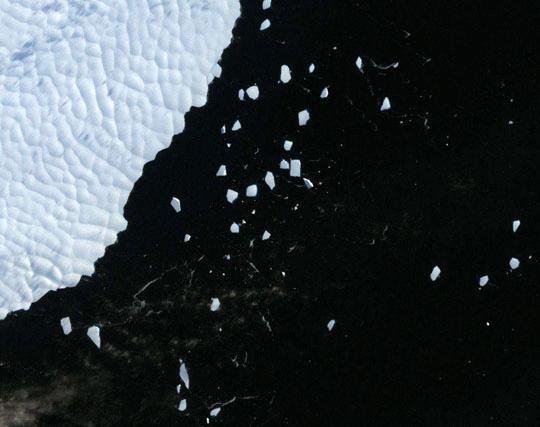
In early 2002, another great slab of ice from the Larsen ice shelf, between the Bellingshausen and Wendell seas, broke off and is now cruising the sea off Antarctica. Here is a scene during this rupture stage, imaged by the ASAR radar on the Envisat (see Overview) launched in February 2002.
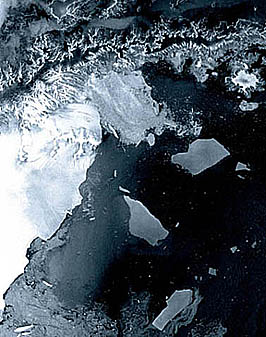
While some changes in sea ice (and ice cap) cover, both in area and thickness, may be progressing towards lower overall areal extent because of natural/man-induced global warming, there are as well normal seasonal fluctuations. Here are two sets of images made by the AMSR-E sensor on Aqua (page 16-11) of Arctic sea ice and Antarctic shelf ice during two periods in 2002 between June and July:
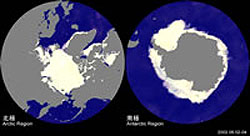
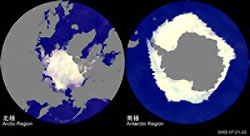
In the northern hemisphere, the ice shrinks in extent as the summer progresses. But in the southern hemisphere, where it is winter at this time of the year, the ice shelf around the Antarctic increases.
In the U.S., winter ice on
the Great Lakes becomes a major impediment to shipping and usually some or all
of the lakes close to normal travel. The AVHRR on NOAA satellites daily monitors
the status of ice cover , giving results like this thermal IR image, made on January
31, 1996 (ice is light-toned; clouds appear very dark):
